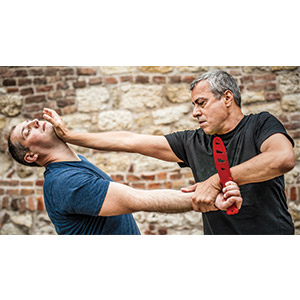
A training knife is an essential tool if you want to master the blade or learn how to defend against it. Law enforcement officers, military operators, and martial artists frequently train with dummy knives to learn critical self-defense techniques. In this guide, we’ll discuss what a training knife is and how butterfly knife trainers and other rubber knives can help you safely practice knife drills so that you can learn how to properly use a knife and defend against one in a fight.
What Is a Training Knife?
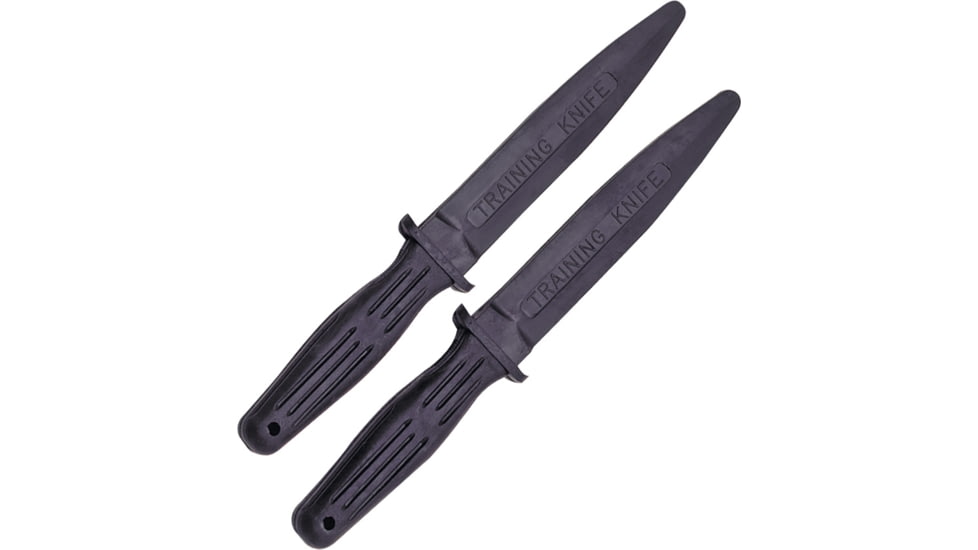
A training knife is a knife with a dull or rubber blade that is used for practicing knife drills or during self-defense exercises. They provide a safe way to hone your knife skills and build important muscle memory for when you need to use or defend against a real knife. Not every practice knife is the same, and the type of training weapon you should buy depends on what you need it for.
Are Training Knives Safe?
Using training knives is the safest way to practice knife techniques, if used properly. Their biggest benefit is the lack of a sharp blade that can cut you, but you still need to be careful when practicing with fake knives. Even if the blade isn’t sharp, the handle can be durable and heavy, which can definitely hurt if you get whacked in the head with it.
Also, training knives vary in materials and construction depending on their purpose, which means some knives can still inflict pain, even without a pointy blade. Manufacturers like Blueguns make their training knives with steel-reinforced polyurethane (plastic) construction throughout. These are safer to use since the entire knife is made of plastic, but you still need to be careful to not strike someone hard with the handle. These types of training knives are often used during police training and martial arts exercises.
On the other hand, there are training knives used to practice drills and tricks like butterfly knife trainers. Butterfly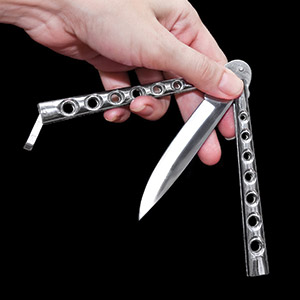 training knives, like these ones from Bear & Son, have steel blades that aren’t sharpened. A butterfly knife, also known as a balisong or Batangas knife, has two slim handles that rotate in opposite directions around the tang, and the blade can be concealed within these handles while rotating. These knives are mostly used for performing tricks, but real butterfly knives with sharp blades are just as lethal as any folding knife. Butterfly knife trainers use steel blades to mimic the weight of the real weapon so that you can properly learn and perform various tricks. You can definitely hurt yourself flinging that hard piece of steel around without proper caution. Training knives are only as safe as you are, which is why they are trusted and used heavily in police academies, dojos, and other environments where safety is a priority and regularly practiced.
training knives, like these ones from Bear & Son, have steel blades that aren’t sharpened. A butterfly knife, also known as a balisong or Batangas knife, has two slim handles that rotate in opposite directions around the tang, and the blade can be concealed within these handles while rotating. These knives are mostly used for performing tricks, but real butterfly knives with sharp blades are just as lethal as any folding knife. Butterfly knife trainers use steel blades to mimic the weight of the real weapon so that you can properly learn and perform various tricks. You can definitely hurt yourself flinging that hard piece of steel around without proper caution. Training knives are only as safe as you are, which is why they are trusted and used heavily in police academies, dojos, and other environments where safety is a priority and regularly practiced.
What Is A Training Knife Used For?
A training knife can be used in any situation where you want to use a knife without causing harm. Let’s break down some reasons you may want to consider getting a dummy knife.
Learning How to Use a Knife for Self-Defense
While simple in design, knives are more complex than most people realize. There are several different ways you can use a knife to defend yourself, from stabbing with the blade to striking with the butt. Folding knives are amazing self-defense tools that can fit right in with your everyday carry (EDC) essentials. Knowing how to use one properly will greatly increase your chance of warding off threats and prevent you from accidentally cutting yourself.
With a training knife, you can practice using the knife while pinned by an attacker or while facing them head on. You can safely train with others and study their defending moves to learn predictable patterns and where to strike next. You’d be amazed at how many different ways you can defend yourself with a pocket knife.
Becoming Familiar with a Specific Knife Style
There are numerous types of knives out there, from fixed blade to throwing knives, and different knives can be used in unique ways. If you’re interested in buying a specific knife for self-defense, you can look for a training knife in that particular style. Like their real counterparts, dummy knives come in countless styles, and you can choose a fake version of a knife to practice with before buying the real thing.
Learning How to Defend Against a Knife
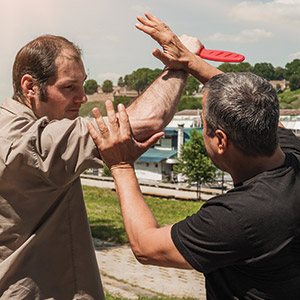
Most commonly seen in law enforcement training and martial arts exercises, self-defense exercises with training knives create realistic practice scenarios without the danger real knives pose. One of the best ways to improve your self-defense skills against a knife is to practice using one offensively, and vice versa. Like we mentioned above, training knife drills help you learn how a threat will react to your knife movements. Those skills translate to defending against one yourself, as you will learn predictable movements to avoid and when to perform certain maneuvers. Timing is critical when a knife is present, and with a rubber training knife, you can practice, practice, practice – sharpening your muscle memory and ensuring you’re prepared for worst case scenarios.
Butterfly Training Knives
Butterfly knives look cool, and seeing a professional perform butterfly knife tricks will make you want to run out and try them yourself. But a butterfly knife is still a knife, and it is incredibly dangerous for an amateur to practice spinning around a real one. Butterfly practice knives usually have steel blades that aren’t sharpened. They can’t cut or stab you, but the blunt blade can definitely cause pain, especially when it’s moving quickly.
Still, butterfly training knives are the safest method of practicing knife tricks as long as you treat it like it’s a real blade. After all, you’re trying to learn how to use it, and the most important part of learning how to use a butterfly knife is ensuring you’ll leave with the same number of fingers if it was real.
Why You Should Practice with A Training Knife
The FBI homicide database shows that knives were the second weapon most frequently used in recorded homicide cases over the last 4 years next to guns, so understanding how knives operate is more important than you think. If your state has concealed carry restrictions, owning a knife for personal defense is your next best option. Like your firearm, training is important if you want to be able to properly use it in emergency situations. 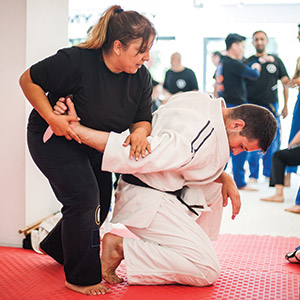
Real knives are some of the best EDC gear to have on you throughout the day. Hopefully, that knife is just a very handy cutting tool for opening packages. You never want to use that blade in defense, but you damn well want to know how to if the time comes. Many people own an EDC knife without knowing how to properly use it. Not only can they accidentally harm themselves, but they may freeze up in the moment or make the wrong move. Practicing with fake knives builds important muscle memory that can eventually become instinctual when you need to protect yourself.
A training knife with a rubber blade can be pressed against you without cutting. You can physically feel the impact points of an edge weapon and gain incredible insight on knife techniques that you won’t learn from just watching drills and videos.
Sharpening Your Knife Skills
A training knife is an important piece of training gear if you want to learn how to use and defend yourself from a real one. Practice knives are safe to train with in the right settings. You just need to be careful about any harder parts of the knife that can be used as a blunt object of force, especially steel training knives.
From butterfly knife trainers to rubber karambits, training knives come in many variations, and you can buy a training knife that resembles a real knife you’re interested in owning. To learn more about knives and blade styles, check out this guide on How to Choose a Pocket Knife. Hopefully this guide helped you learn why a training knife is incredibly useful. Please remember to practice safely and often to get the most out of your training knife.
- What Is a Red Dot Sight Good For? - August 16, 2021
- What Binocular Magnification Is Best for Hunting? - August 16, 2021
- What Is a Training Knife? - July 23, 2021
Related Posts
« Vortex SPARC Solar Red Dot Sight Do all 9mm bullets fit 9mm guns? 3 Popular 9mm Calibers »


